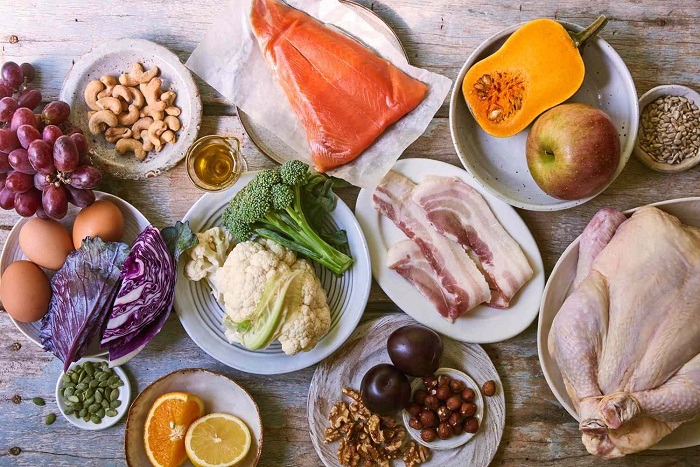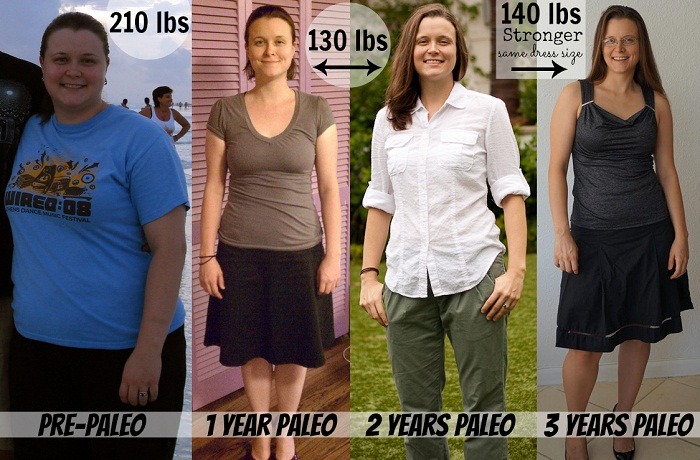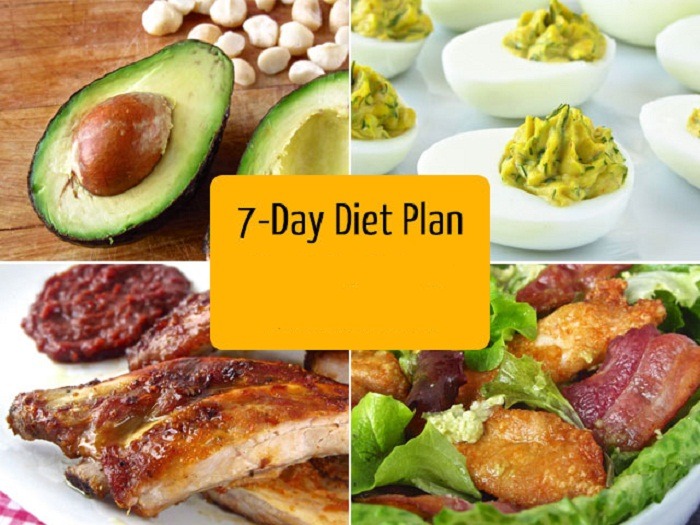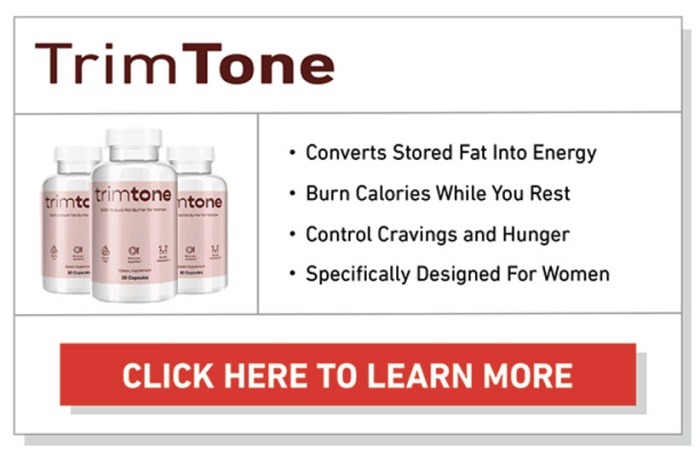Introduction to the Paleo Diet
Contents
- 1 Introduction to the Paleo Diet
- 2 History of the Paleo Diet
- 3 Paleo Diet Macros
- 4 Benefits of the Paleo Diet
- 5 Downsides of the Paleo Diet
- 6 Paleo Diet Details
- 7 Best Foods to Eat on the Paleo Diet
- 8 Foods to Avoid on the Paleo Diet
- 9 Keys to Success on the Paleo Diet
- 10 Common Myths About the Paleo Diet
- 11 Common Mistakes on the Paleo Diet
- 12 Paleo Diet Rules
- 13 Common Questions About the Paleo Diet
- 14 Paleo vs. Keto
- 15 Paleo vs. Carnivore
- 16 Paleo vs. Raw Foods
- 17 Best Paleo Diet Supplements
- 18 Paleo Diet Recipes & Resources
- 19 Grilled Lemon Herb Chicken:
- 20 Sweet Potato and Kale Salad:
- 21 Paleo Diet 7-Day Meal Plan
- 22 Resources:
- 23 Paleo Diet Studies
- 24 Proponents of the Paleo Diet
- 25 Conclusion
The Paleo Diet, also known as the Paleolithic or Caveman Diet, is a dietary approach that seeks to emulate the eating habits of our ancestors from the Paleolithic era. The underlying principle is to consume foods that were available to early humans before the advent of agriculture and industrialization. Proponents argue that this diet aligns more closely with our evolutionary heritage and can contribute to better health. In this comprehensive exploration, we will delve into the history, macronutrient composition, benefits, downsides, and various aspects of the Paleo Diet.
Related Post: 7-Day Keto Cycle Diet for Optimal Muscle Building | Ultimate Guide
History of the Paleo Diet
The concept of the Paleo Diet was popularized by Dr. Loren Cordain, a professor in the Department of Health and Exercise Science at Colorado State University. Dr. Cordain published the book “The Paleo Diet” in 2002, where he advocated for a return to the dietary patterns of our pre-agricultural ancestors. The idea gained momentum as people sought alternatives to modern, processed diets.
The rationale behind the Paleo Diet is rooted in the belief that our genetics have not adapted to the rapid changes in our diet since the agricultural revolution. By reverting to the foods our ancestors consumed, proponents argue that we can optimize our health and prevent various modern-day ailments.
Paleo Diet Macros
The macro composition of the Paleo Diet typically consists of a balanced distribution of macronutrients – proteins, fats, and carbohydrates. However, the emphasis is on high-quality sources of these macronutrients. The diet encourages the consumption of lean proteins, healthy fats, and complex carbohydrates while avoiding processed foods, grains, and legumes.
Protein-rich foods like lean meats, fish, and eggs are staples in the Paleo Diet. Healthy fats come from sources such as avocados, nuts, seeds, and olive oil. Carbohydrates are primarily derived from fruits and vegetables, which also contribute essential vitamins and minerals.
Benefits of the Paleo Diet

- Weight Loss: Many individuals experience weight loss on the Paleo Diet, attributed to a higher intake of protein and a reduced consumption of processed foods and refined sugars.
- Improved Blood Sugar Control: The diet’s focus on whole foods may contribute to better blood sugar regulation, which is beneficial for individuals with insulin resistance or diabetes.
- Enhanced Nutrient Intake: By emphasizing nutrient-dense foods, the Paleo Diet may lead to increased intake of vitamins, minerals, and antioxidants.
- Reduced Inflammation: The exclusion of processed foods and potential allergens may help reduce inflammation in the body, which is linked to various chronic diseases.
- Better Digestive Health: The avoidance of grains and legumes, which contain anti-nutrients, may lead to improved digestive health for some individuals.
Downsides of the Paleo Diet
- Nutrient Gaps: Eliminating entire food groups, such as dairy and grains, may lead to nutrient gaps, requiring careful planning to ensure adequate intake of certain vitamins and minerals.
- Social Challenges: Adhering to the Paleo Diet can be socially challenging, especially in situations where typical modern foods are served.
- Cost Considerations: The diet’s emphasis on high-quality, organic, and grass-fed products can be expensive, limiting accessibility for some individuals.
- Potential for Overconsumption: While the emphasis on whole foods is positive, it’s still possible to overconsume calories, leading to weight gain.
- Lack of Long-Term Research: Long-term studies on the Paleo Diet are limited, making it challenging to assess its impact on health over extended periods.
Paleo Diet Details
The Paleo Diet centers around whole, unprocessed foods, emphasizing the following:
- Lean Proteins: Meats such as beef, poultry, fish, and eggs are rich in essential amino acids and serve as primary protein sources.
- Healthy Fats: Avocados, nuts, seeds, and olive oil provide essential fatty acids, contributing to overall health.
- Fruits and Vegetables: Colorful fruits and vegetables offer a variety of vitamins, minerals, and antioxidants.
- Nuts and Seeds: These provide additional healthy fats and a range of micronutrients.
- Tubers: Root vegetables like sweet potatoes are included as a source of complex carbohydrates.
- Avoidance of Processed Foods: Processed foods, refined sugars, and artificial additives are strictly avoided.
Best Foods to Eat on the Paleo Diet

- Grass-fed Meat: Opt for grass-fed or pasture-raised meats, which are higher in omega-3 fatty acids and other nutrients.
- Seafood: Fatty fish like salmon and mackerel provide omega-3s, while shellfish offer essential minerals.
- Eggs: A rich source of protein and various nutrients, eggs are a Paleo-friendly food.
- Vegetables: A diverse array of colorful vegetables ensures a broad spectrum of nutrients.
- Fruits: Berries, apples, and other fruits in moderation provide natural sweetness and fiber.
- Nuts and Seeds: Almonds, walnuts, chia seeds, and flaxseeds are nutrient-dense options.
- Healthy Fats: Avocado, olive oil, and coconut oil are staples for cooking and dressing.
Foods to Avoid on the Paleo Diet
- Grains: Wheat, barley, rice, and other grains are excluded due to their association with the advent of agriculture.
- Legumes: Beans, lentils, and peanuts are avoided as they contain anti-nutrients and are not part of the ancestral diet.
- Dairy: Dairy products, including milk, cheese, and yogurt, are excluded for those following a strict Paleo approach.
- Processed Foods: Foods containing artificial additives, preservatives, and refined sugars are off-limits.
- Refined Vegetable Oils: Oils like soybean, corn, and canola oil are replaced with healthier options like olive oil.
Keys to Success on the Paleo Diet
- Meal Planning: Planning meals ahead ensures a well-balanced and compliant diet.
- Education: Understanding the principles and reasoning behind the diet fosters commitment.
- Gradual Transition: Slowly transitioning to the Paleo Diet can make the adjustment more sustainable.
- Hydration: Staying adequately hydrated is crucial for overall health.
- Support System: Having a supportive community or partner can make it easier to navigate challenges.
Common Myths About the Paleo Diet
- Excessive Meat Consumption: Contrary to a common misconception, the Paleo Diet does not advocate for unlimited meat consumption. It promotes a balanced intake of protein from various sources.
- Low Carb Only: While lower in refined carbohydrates, the Paleo Diet includes complex carbohydrates from fruits and vegetables.
- Lacks Fiber: With a focus on fruits, vegetables, and nuts, the Paleo Diet can provide ample dietary fiber.
- Not Sustainable for Athletes: Athletes can successfully adopt the Paleo Diet with proper planning to meet their energy and nutrient needs.
Common Mistakes on the Paleo Diet
- Overlooking Nutrient Density: Simply removing certain foods without considering nutrient density can lead to deficiencies.
- Ignoring Individual Variability: The ideal Paleo Diet may vary between individuals based on factors such as activity level, health status, and personal preferences.
- Neglecting Micronutrients: Ensuring an adequate intake of vitamins and minerals is essential for overall health.
- Excessive Focus on Calories: While calories matter, the quality of food is equally crucial in the Paleo Diet.
- Rigid Adherence: Being too strict can lead to feelings of deprivation, making it harder to sustain the diet.
Paleo Diet Rules

The Paleo Diet, rooted in the principles of ancestral eating, follows specific guidelines to optimize health and well-being. Understanding these rules is essential for successfully adopting and maintaining a Paleo lifestyle. Here are the key rules to adhere to when following the Paleo Diet:
- Focus on Whole Foods: Emphasize the consumption of whole, unprocessed foods. Choose fresh fruits, vegetables, lean meats, and seafood to ensure a nutrient-dense diet.
- Lean Proteins: Prioritize high-quality, lean protein sources such as grass-fed meats, wild-caught fish, and free-range poultry. These proteins are rich in essential amino acids and healthy fats.
- Eliminate Grains: Exclude grains and grain-based products from your diet. This includes wheat, barley, rice, and other grains that were not part of the ancestral human diet.
- Avoid Legumes: Steer clear of legumes, including beans, lentils, and peanuts. Legumes contain anti-nutrients and are not considered part of the Paleo diet.
- Say No to Dairy: Eliminate dairy products from your diet. While dairy can be nutrient-dense, it is excluded from the Paleo Diet due to potential lactose intolerance and anti-nutrient content.
- Limit Processed Foods: Cut out processed foods, refined sugars, and artificial additives. Stick to whole, natural foods to minimize exposure to potentially harmful substances.
- Healthy Fats: Include sources of healthy fats such as avocados, nuts, seeds, and olive oil. These fats provide essential fatty acids and contribute to overall health.
- Embrace Fruits and Vegetables: Consume a variety of colorful fruits and vegetables to ensure a broad spectrum of vitamins, minerals, and antioxidants. These foods are rich in fiber and contribute to overall well-being.
- Moderate Nut Consumption: While nuts are allowed, consume them in moderation. Nuts can be calorie-dense, so be mindful of portion sizes.
- Tubers in Moderation: Include starchy tubers like sweet potatoes and yams in moderation. These provide a source of complex carbohydrates.
- Prioritize Organic and Grass-Fed: When possible, choose organic and grass-fed options for meat and dairy products. These choices align with the diet’s emphasis on quality and nutrient density.
- Mindful Cooking Oils: Opt for cooking oils like olive oil and coconut oil over refined vegetable oils. These oils offer healthier fat profiles and are more in line with the Paleo Diet.
- Hydration is Key: Stay adequately hydrated by drinking plenty of water throughout the day. Herbal teas and coconut water can also be included.
- Practice Portion Control: While the emphasis is on nutrient-dense foods, be mindful of portion sizes to avoid overconsumption of calories.
- Listen to Your Body: Pay attention to how different foods make you feel. Adjust your diet based on your individual needs, preferences, and any specific health considerations.
Adhering to these Paleo Diet rules provides a framework for a balanced and healthful way of eating. It’s important to recognize that individual responses to dietary changes vary, and adjustments may be needed based on personal factors. Consulting with healthcare professionals or registered dietitians can provide personalized guidance on implementing and optimizing the Paleo Diet for individual needs.
Common Questions About the Paleo Diet
Is the Paleo Diet Suitable for Everyone?
The Paleo Diet may not be suitable for certain populations, such as those with specific medical conditions or dietary restrictions. Consulting with a healthcare professional is advisable before making significant dietary changes.
Can You Follow the Paleo Diet as a Vegetarian or Vegan?
While challenging, vegetarians and vegans can adopt a modified version of the Paleo Diet by incorporating plant-based protein sources and emphasizing vegetables, fruits, and nuts.
Is the Paleo Diet Supported by Scientific Evidence?
Research on the Paleo Diet is ongoing, and while some studies suggest potential benefits, more long-term research is needed to establish its efficacy and safety conclusively.
Does the Paleo Diet Help with Weight Loss?
Many individuals report weight loss on the Paleo Diet, but individual responses vary. The key to weight loss is often a combination of factors, including caloric intake, macronutrient balance, and physical activity.

Paleo vs. Keto
While both the Paleo and Ketogenic (Keto) diets share similarities, they have distinct differences. The Keto Diet is characterized by very low carbohydrate intake, leading the body into a state of ketosis where it primarily burns fat for energy. In contrast, the Paleo Diet allows for a more balanced distribution of macronutrients, including moderate carbohydrates from fruits and vegetables.
Paleo vs. Carnivore
The Carnivore Diet is an even more restrictive approach, emphasizing the consumption of animal products exclusively. While the Paleo Diet includes a variety of foods, the Carnivore Diet limits the intake of meat, fish, and other animal products. Both diets have sparked debates about their long-term sustainability and potential health risks.
Paleo vs. Raw Foods
The Raw Food Diet prioritizes uncooked and unprocessed foods, including fruits, vegetables, nuts, and seeds. While the Paleo Diet includes some raw foods, it also includes cooked options like lean meats. The primary difference lies in the emphasis on raw plant-based foods in the Raw Food Diet.
Best Paleo Diet Supplements
While the Paleo Diet encourages obtaining nutrients from whole foods, certain supplements can be beneficial:
- Omega-3 Fatty Acids: To ensure an adequate intake of these essential fats, especially for individuals not consuming fatty fish regularly.
- Vitamin D: For those with limited sun exposure, a Vitamin D supplement may be necessary.
- Magnesium: To support muscle and nerve function, particularly for those with low dietary intake.
- Probiotics: To promote gut health, especially if not consuming fermented foods.
Paleo Diet Recipes & Resources
Grilled Lemon Herb Chicken:
- Ingredients: Chicken breasts, lemon, olive oil, herbs (rosemary, thyme), salt, and pepper.
- Instructions: Marinate chicken in a mixture of lemon juice, olive oil, herbs, salt, and pepper. Grill until cooked through.
Sweet Potato and Kale Salad:
- Ingredients: Sweet potatoes, kale, olive oil, balsamic vinegar, cherry tomatoes, salt, and pepper.
- Instructions: Roast sweet potatoes, sauté kale, and toss with olive oil, balsamic vinegar, tomatoes, salt, and pepper.
Paleo Diet 7-Day Meal Plan

Embarking on the Paleo Diet involves careful planning to ensure a well-rounded and satisfying assortment of meals. The following 7-day meal plan offers a glimpse into a week of delicious and nutritious Paleo-friendly dishes. Remember to adjust portion sizes based on individual needs and preferences.
Day 1:
Breakfast: Scrambled eggs with spinach and tomatoes cooked in coconut oil.
Lunch: Grilled chicken breast salad with mixed greens, avocado, and a balsamic vinaigrette dressing.
Dinner: Baked salmon with lemon and dill, alongside roasted sweet potatoes and steamed broccoli.
Day 2:
Breakfast: Omelet with mushrooms, bell peppers, and onions cooked in olive oil.
Lunch: Shrimp stir-fry with broccoli, cauliflower, and snap peas in coconut aminos and ginger sauce.
Dinner: Beef stir-fry with asparagus, bell peppers, and zucchini served over cauliflower rice.
Day 3:
Breakfast: Sliced turkey breast with a side of sliced apples and almond butter.
Lunch: Tuna salad lettuce wraps with chopped celery, red onion, and mayo made from avocado oil.
Dinner: Grilled lamb chops with rosemary and garlic, accompanied by roasted Brussels sprouts and butternut squash.
Day 4:
Breakfast: Smoothie made with coconut milk, berries, and a scoop of protein powder.
Lunch: Turkey and avocado lettuce wraps with cherry tomatoes and a squeeze of lime.
Dinner: Baked cod with a lemon herb crust, served with sautéed kale and roasted sweet potatoes.
Day 5:
Breakfast: Bacon and vegetable frittata with cherry tomatoes, mushrooms, and spinach.
Lunch: Chicken and vegetable skewers grilled with olive oil and herbs, served with a side of cucumber salad.
Dinner: Zucchini noodles with homemade meat sauce made from ground beef, tomatoes, and Italian herbs.
Day 6:
Breakfast: Sliced mango with a handful of almonds and coconut flakes.
Lunch: Egg salad made with hard-boiled eggs, avocado, and diced celery, wrapped in lettuce leaves.
Dinner: Pan-seared turkey burgers with a side of roasted asparagus and sweet potato wedges.
Day 7:
Breakfast: Coconut milk chia pudding topped with fresh berries and sliced almonds.
Lunch: Smoked salmon salad with arugula, cucumber, and a lemon-tahini dressing.
Dinner: Pork loin roast with herbs, accompanied by sautéed green beans and mashed cauliflower.
This 7-day meal plan provides a variety of nutrient-dense foods, showcasing the flexibility and deliciousness of the Paleo Diet. Experiment with different recipes and flavors to find what works best for your taste preferences and nutritional needs. Remember to stay hydrated, listen to your body, and enjoy the journey to a healthier lifestyle.
Resources:
Paleo Diet Studies
- “Metabolic and physiologic effects from consuming a hunter-gatherer (Paleolithic)-type diet in type 2 diabetes” (Loren Cordain et al., 2009) This study suggests that a Paleo Diet may improve glycemic control and cardiovascular risk factors in individuals with type 2 diabetes.
- “The ancestral human diet: what was it and should it be a paradigm for contemporary nutrition?” (S. Boyd Eaton et al., 1998) This paper explores the potential benefits of aligning modern diets with the evolutionary patterns of early humans.
- “Effects of a Paleolithic diet on cardiovascular disease risk factors: a systematic review and meta-analysis of randomized controlled trials” (Manuel J. Amancio et al., 2021) A meta-analysis examining the impact of a Paleo Diet on cardiovascular risk factors, suggests potential benefits.
Proponents of the Paleo Diet
- Dr. Loren Cordain: A leading advocate and researcher, Dr. Cordain’s work has significantly contributed to the popularity of the Paleo Diet.
- Robb Wolf: A biochemist and author of “The Paleo Solution,” Wolf has been influential in promoting the health benefits of the Paleo Diet.
- Mark Sisson: Author of “The Primal Blueprint,” Sisson is a proponent of the Primal lifestyle, which aligns with the principles of the Paleo Diet.
Conclusion
In conclusion, the Paleo Diet offers a unique perspective on nutrition, drawing inspiration from our ancestors’ dietary patterns. While it has gained popularity for its potential health benefits, individuals should approach it with consideration for their unique needs and consult with healthcare professionals when necessary. As with any diet, the key lies in balance, variety, and mindful consumption of nutrient-dense foods.


